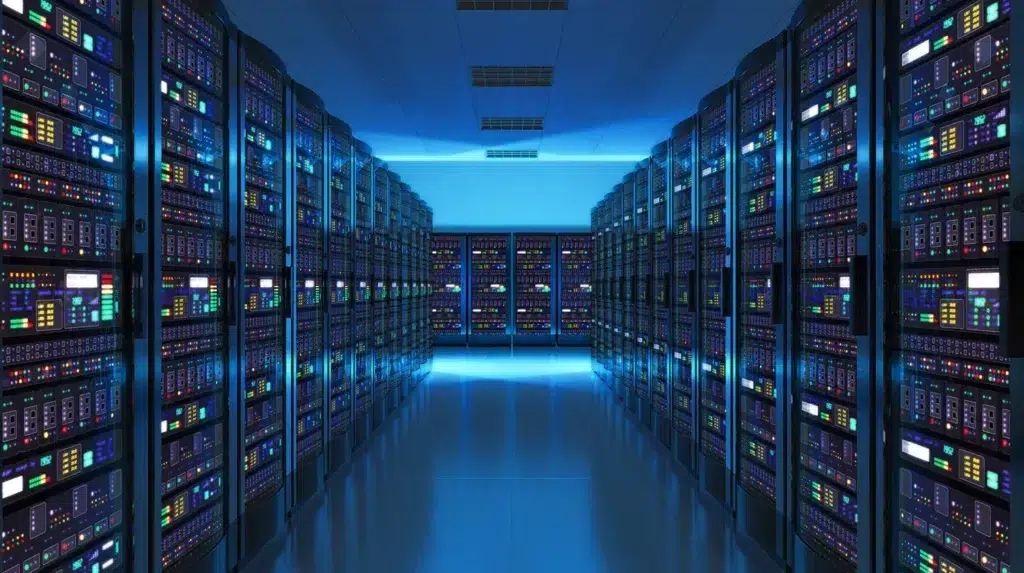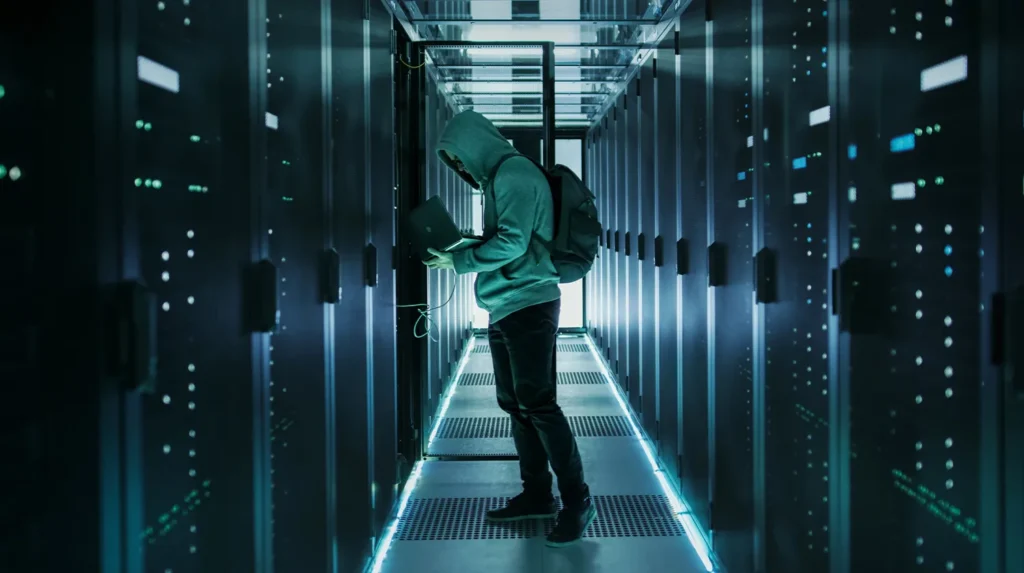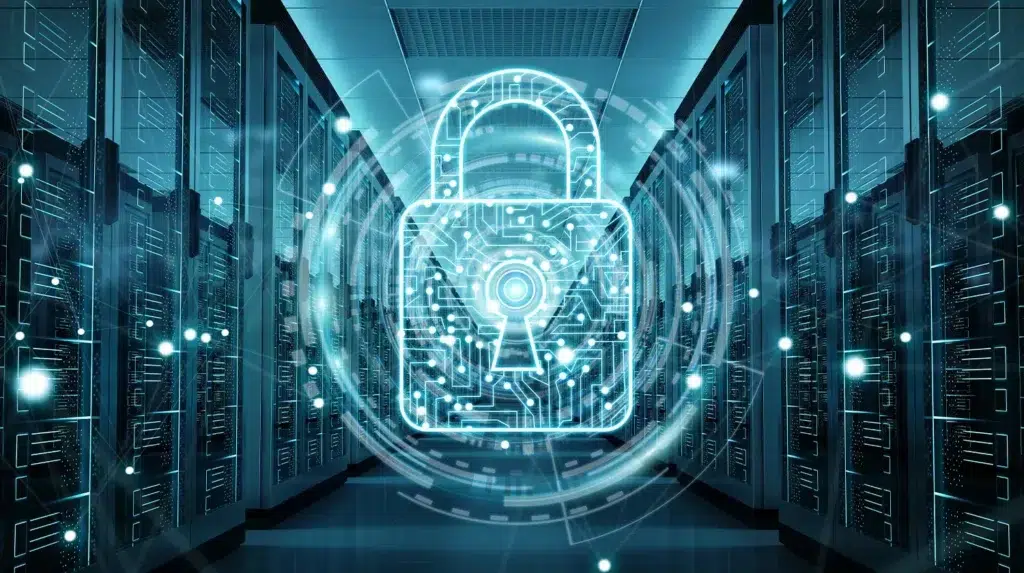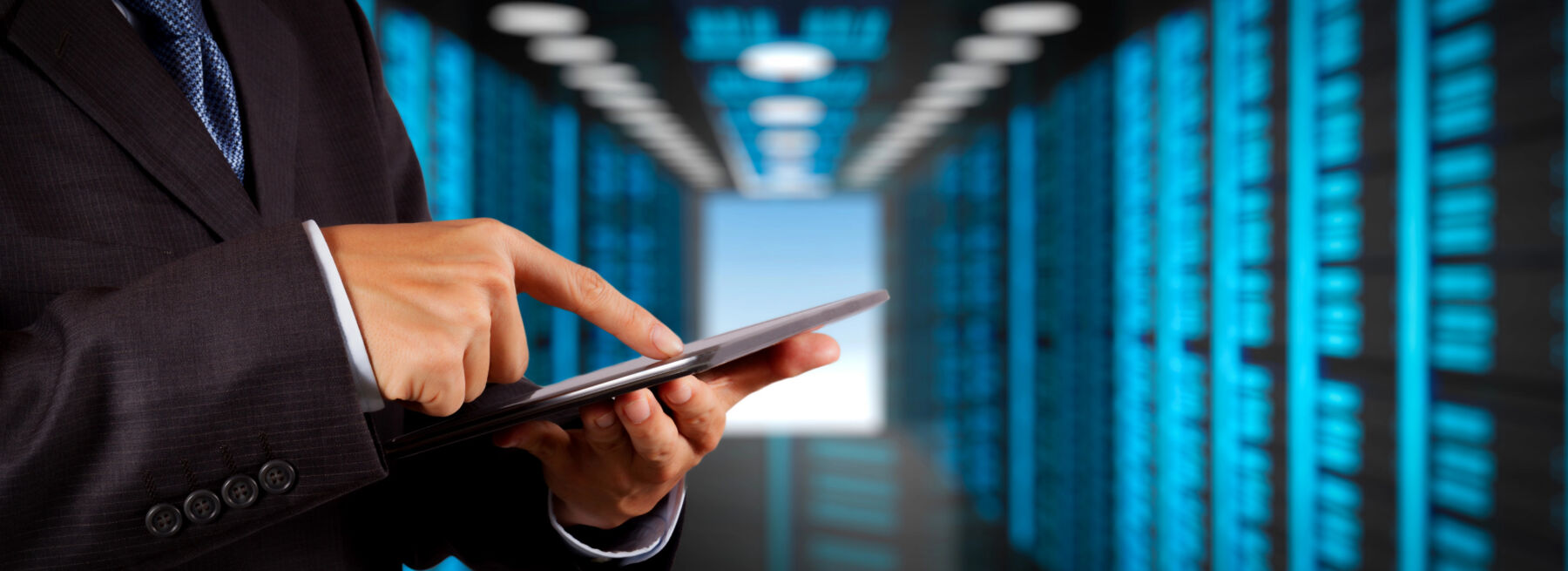It is important to protect data center assets from natural disasters, theft, and cyber threats. This article will cover the top strategies to secure data centers in physical and digital space to help safeguard operations.
Key Takeaways
- Data center security is key to protecting sensitive information from internal and external threats, business continuity, and data integrity.
- A full security strategy includes physical measures like access control, surveillance, and data center security services including firewalls and multi-factor authentication.
- Best practices like regular security audits, employee training, and redundancy are important to find vulnerabilities and maintain operational resilience.
The Importance of Data Center Security

Data center security goes beyond the physical protection of assets. It also helps maintain business-critical functions. A security breach can cause financial losses and long-term damage to an organization’s reputation. Confidentiality, integrity, and availability are key when managing data security information. Safeguarding data center resources from threats
Protecting data center resources from all threats is vital to business continuity and data integrity.
As repositories of critical data and processes, data centers must defend against internal and external threats. These facilities are often targets for cyber-attacks and physical intrusions. Robust and proactive security protocols are important to help protect sensitive information from corruption or theft.
Key Components of Data Center Security
Data center security includes both physical and virtual measures that help protect assets. The purpose of physical security is to restrict unauthorized access to facilities. Virtual security creates a barrier against cyber threats to data and systems. To help protect
Since data centers store data and run processes, they face various risks. To help protect them, they need to have security protocols in place, follow strict standards, and have 24/7 surveillance.
Physical Security Measures
Physical security is the first line of defense for data centers. Using access control mechanisms like biometric scanners, keycards and personal identification numbers (PINs) can restrict facility access to authorized personnel. The presence of security personnel and continuous surveillance can help deter unwanted activities and document events that may need to be looked at later.
Environmental controls should be in place to help maintain the ideal conditions inside data centers and protect sensitive equipment. These systems manage internal temperature, humidity levels, and power supply. In case of fire, advanced chemical fire suppression systems can kick in to minimize damage.
Enhancing Data Center Security with Live Video Monitoring
Complementing static physical security measures at data centers is live video monitoring, which provides proactive surveillance of facilities. By combining this real-time strategy with detection devices – including but not limited to motion sensors – security professionals can better shield against intrusions or breaches across the perimeter they are monitoring.
The Power of Live Video Monitoring from Stealth
Stealth’s live video monitoring takes data center security to the next level by:
- Real-time Threat Detection: Trained security professionals watch live video feeds so they can spot suspicious activity or potential threats as they happen.
- Quick Response: When an incident is detected, security can alert on-site staff or law enforcement, so response times can be reduced.
- Deterrence: Visible cameras and signs saying “you are being monitored” can help deter potential intruders from trying to get in.
- Coverage of Blind Spots: Strategically placed cameras can cover areas that static security measures can’t.
- Scalability: Live monitoring can be scaled up to cover expanding facilities or multiple locations from one central monitoring center.
Integration with Advanced Technologies
Stealth’s live video monitoring systems use the latest technologies to make them more effective:
- AI and Machine Learning: These can detect unusual patterns or behaviors and alert human operators to threats that may have gone undetected.
- High-Definition Cameras: Clear images so even small details are captured which can be important for investigations or evidence.
- Thermal Imaging: Useful for perimeter security, thermal cameras can see intruders in complete darkness or adverse weather.
- Video Analytics: Software can flag specific events, such as perimeter breaches or unauthorized access attempts, for the operator.
Works with Other Security Measures
Live video monitoring works alongside other security technologies to create a layered security system:
- Access Control Systems: Video monitoring can check that only authorized personnel are using access cards or biometric systems.
- Intrusion Detection Systems: When an alarm is triggered, live video can verify the incident so false alarms are reduced and response times improved.
- Environmental Monitoring: Cameras can also be used to monitor for physical threats to the data center, such as water leaks or overheating equipment.
Compliance and Audit Support
For many data centers compliance is a big deal. Live video monitoring can help with:
- Audit Trails: Recorded footage provides a detailed log of all activity which can be useful during audits or investigations.
- Access Logging: Video evidence can back up electronic access logs for extra verification.
- Incident Documentation: In the event of a security breach, video documentation can help with post-incident analysis and future prevention.
Customization for Data Center Needs
Every data center has different security needs. Live video monitoring solutions can be customized to fit:
- Virtual Guard Tours: Regular virtual tours of the facility can be done without the need for physical guards in sensitive areas.
- Audio Warnings: Some systems have speakers so monitoring personnel can verbally intervene or give instructions during an incident.
- Mobile Monitoring: Security staff can access live feeds and receive alerts on their mobile devices so they can continue watching even when off-site.
Virtual Security Approaches
Data center security is key to defending against cyber threats. Key elements are firewalls and intrusion prevention systems which act as a barrier to block unauthorized access and detect malicious activities. Having multiple layers of firewalls provides additional protection and helps to detect internal vulnerabilities.
Detection systems monitor for unauthorized access and threats in data centers and alert security personnel to incidents.
Multi-factor authentication (MFA ) is part of virtual security which requires at least 2 forms of verification before access is granted. This higher level of security defends against password compromise, prevents unauthorized entry, and ensures only legitimate users can access sensitive information and system resources.
Common Threats to Data Centers

Data centers are exposed to many types of risks that can affect their operations and the data they store. These risks include cyberattacks, physical security breaches, and environmental risks. They must acknowledge these risks and implement robust security to help ensure business continuity.
Data center security services help to mitigate these threats by combining technology and physical measures to secure data center assets.
Among these are cyber threats like ransomware and distributed denial-of-service (DDoS) attacks which can not only disrupt services but also steal sensitive information and cause financial loss and reputational damage. Physical intrusions like theft or unauthorized entry are still a big concern for data center operators.
Physical Attacks
Data center security is key to protecting against physical attacks like hardware theft and unauthorized entry. These security breaches can cause significant damage including loss of sensitive information which can result in reputational damage and legal liabilities for the organization.
To counter these threats, access to facilities must be restricted to authorized personnel. A combination of access control systems, monitoring equipment, and dedicated security personnel is key to deter potential intruders and respond to incidents promptly, as well as to allow legitimate entry to the data center’s physical infrastructure.
Environmental Hazards
Natural disasters and power outages are a big threat to data centers. These events can cause physical damage to hardware and data loss, disrupt business continuity, and increase the risk of security breaches.
To mitigate these environmental risks and have continuous access to critical information, data centers must have robust climate control and fire suppression systems that can help prevent damage or impairment from external factors.
Data Security and Operational Security
Data security and operational security are part of the overall data center security strategy. These can help maintain the confidentiality, integrity, and availability of sensitive data stored in the data center.
Data Security Measures
Data security is designed to protect sensitive data from internal and external threats. These are:
- Encryption: Encrypting data in transit and at rest is key to help deter unauthorized access. Even if data is intercepted or accessed without permission, it will be unreadable and secure.
- Access Control: Implementing strict access controls including multi-factor authentication ensures only authorized personnel can access sensitive data. This reduces data theft and unauthorized data center access.
- Data Backup and Recovery: Regularly backing up data and having a disaster recovery plan in place is crucial for business continuity. This helps ensure data can be restored quickly in case of a disaster and minimizes downtime and data loss.
- Intrusion Detection and Prevention Systems: Using intrusion detection and prevention systems helps to detect and block unauthorized access. These systems monitor network traffic for suspicious activity and can take immediate action to help prevent breaches.
- Data Loss Prevention: Implementing data loss prevention measures helps protect sensitive data from being stolen or compromised. This includes monitoring and controlling data transfer to prevent unauthorized sharing or leakage.
Best Practices for Securing Data Centers

Protecting sensitive data and business continuity requires following data center security best practices. These are to conduct regular security audits, educate employees on security awareness, and implement redundancy measures.
Monitoring users, devices, and network activities is key to detecting performance issues and deterring security threats. Keeping security policies updated and adjusting to the changing threat landscape is key to maintaining a strong defense in data center operations and compliance with regulations.
Regular Security Assessments
It is crucial to conduct regular security assessments to help detect risks and protect data. By doing regular risk assessments you can identify security gaps and determine what updates are needed for additional security measures. Audits are part of these continuous assessments to ensure compliance with regulations and to identify opportunities to improve existing processes.
Recording security procedures is crucial. Documentation is key to compliance. It’s a foundational tool during audits and boosts transparency on safety practices within the organization.
Employee Training and Awareness
Regular and interactive training empowers employees to detect security threats and follow procedures. By including exercises like phishing simulations these programs can help improve their response to threats.
Implementing Redundancy
Having access to data during failures, redundancy is built into data center operations through backup systems and alternative power sources that can run during outages.
Choosing a Secure Data Center Provider
Selecting a data center provider with strong security measures is key to data protection and compliance with regulations. Data centers allow their clients to comply with critical regulations such as HIPAA/HITECH, GLBA, PCI-DSS v3.2, and ITAR by giving secure access to the data center.
The tier level of a data center is a measure of its infrastructure and operations. Choosing a higher-tier facility means more redundancy and stronger infrastructure which are essential for business continuity.
With cloud services setting new compliance standards, providers must be more vigilant in their data center operations to protect sensitive data. Make sure your provider is strictly compliant with these changing standards so you can ensure compliance and protect sensitive assets.
Safeguarding Your Data Center with Stealth Monitoring

Securing a data center is key to protecting sensitive data and business continuity. Organizations can keep their data intact and accessible by implementing strict physical and virtual security, understanding the risks, and following industry standards. Choose a data center provider that has high security standards for compliance and business operations.
To learn more about how live video monitoring can help safeguard data centers, contact us.
Frequently Asked Questions
Why is data center security important?
Data center security is important in protecting sensitive information and making sure business operations are not interrupted. Without proper security, organizations risk data breaches and business interruptions.
What are the elements of data center security?
Data center security needs physical measures like access control and environmental monitoring and virtual measures like firewalls and multi-factor authentication. Together they form a complete security framework.
What are the risks to data centers?
Mitigate risks like environmental hazards (natural disasters and power disruptions), cyberattacks, and physical security breaches that are common to data centers. This is key to data integrity and business continuity.
How do I best secure data centers?
To secure data centers, perform regular security assessments, employee training and awareness and ensure redundancy in power and backup systems. These will form a strong security framework to protect critical data.
Texas Private Security License Number: B14187
California Alarm Operator License Number: ACO7876
Florida Alarm System Contractor I License Number: EF20001598
Tennessee Alarm Contracting Company License Number: 2294
Virginia Private Security Services Business License Number: 11-19499
Alabama Electronic Security License # 002116
Canada TSBC License: LEL0200704

